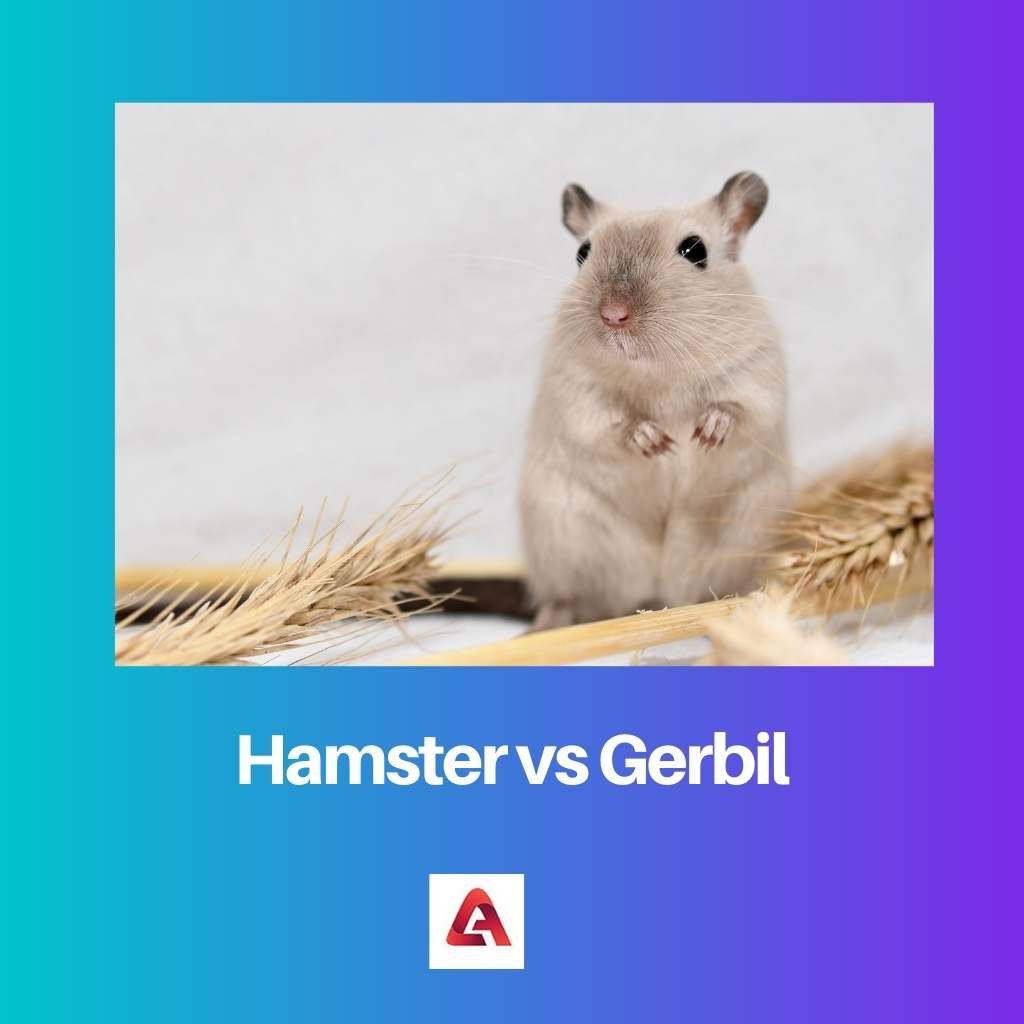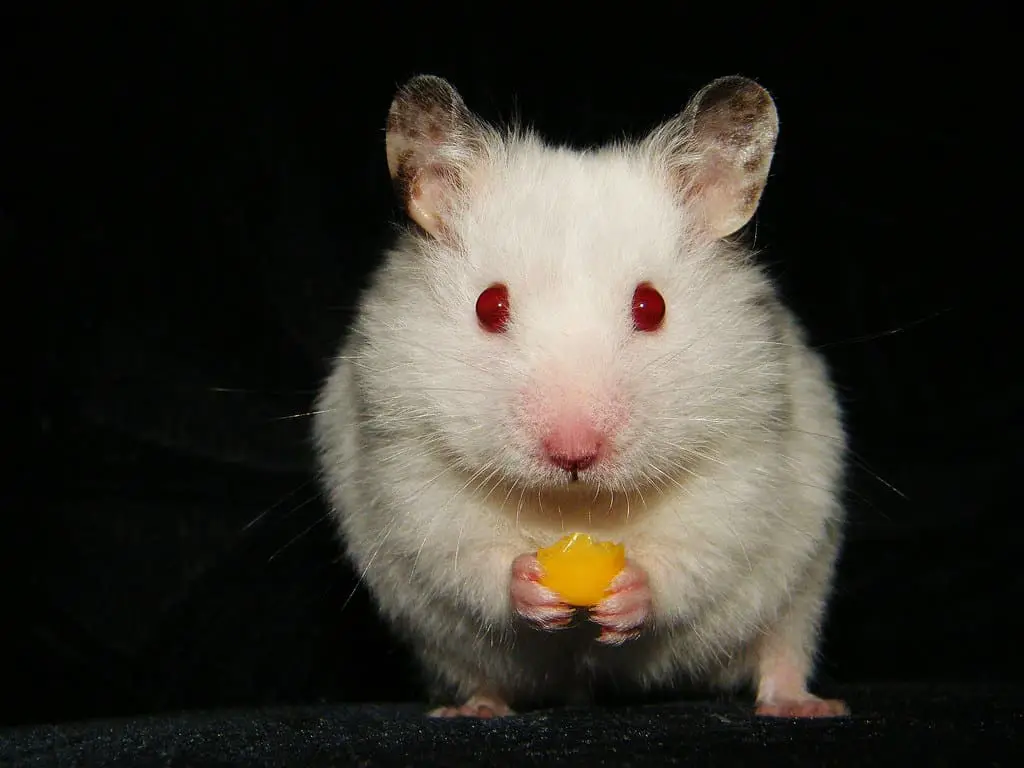You may see why gerbils and hamsters are such popular pets if you’ve ever seen their diminutive features and observed these pint-size rodents in action.
At first look, they appear to have some similarities, such as it ever has been incisor teeth, small claws for burrowing and digging, and a voracious appetite for protein with a side of seeds, fruits, and vegetables.
Key Takeaways
- Hamsters are nocturnal, asleep most of the day, while gerbils are active both day and night.
- Gerbils have longer, fur-covered tails, while hamsters possess short, stubby tails.
- Hamsters live 2-3 years, whereas gerbils have a lifespan of 3-5 years.
Hamster vs Gerbil
The difference between hamsters and gerbils is that of their tail. A hamster’s tail is short and stubby.
The Asian hamster has a somewhat longer tail than the other hamster breeds, but none have a gerbil’s lengthy, silky furry tail.

Hamsters are primarily nocturnal, so they may spend some time creating a nest before cuddling up to sleep the day away. Because the hamster-like roams at night, experts recommend interacting with them in the early mornings and late evenings.
Owners should avoid surprising or rousing them up too early since they may be rather irritable. When they are active, hamsters love digging tunnels with compartments for breeding and preserving their dietary hoards.
Gerbils are not nocturnal creatures. A gerbil, unlike other rodents, can be found sitting straight on its back legs. These little rodents are noted for being inquisitive and interested.
They’re constantly attempting to discover new things, which may make them interesting to watch. Gerbils dwell in colonies in the wild. As a result, they are extremely sociable animals.
Comparison Table
| Parameters of comparison | Hamster | Gerbil |
|---|---|---|
| Face | The face is broad and wide, the snout is short | They are more streamlined and slimmer; the face is longer |
| Tail | Stubby and short | Around 4 inches long; as long as their body |
| Legs | Hind legs support them to be able to sit up | Their hind legs are more muscular, with larger paws with longer feet. |
| Temperament | Their temperament depends on the kind of hamster you decide to adopt. | Gerbils are frequently timid but are also quite affectionate |
| Sleeping habits | They sleep during the day and become active at night | Active during the day and sleeps at night. |
What is Hamster?
Hamsters are rodents (order Rodentia) belonging to the family of Cricetinae, which includes 19 species divided into seven genera. They have identified themselves as appealing tiny pets.
The golden or Syrian hamster is the most well-known species of hamster and is the variety most kept as a pet. Other hamster species that are widely kept as pets include the three dwarf hamster species.
Hamsters are born shaved and blind in a nest constructed in preparation by the mother. After a week, they start exploring outside the nest. Every month, hamsters can give birth to a litter.
They have a strong build, a tail that is significantly shorter than their body length, little fuzzy ears, short, stocky legs, and broad feet.
Depending on the species, its thick long hair ranges from grey to reddish-brown; its underparts range from white to shades of grey and black.
Hamsters are nocturnal and solitary, however, they may be active in the early morning or late evening.
They do not hop but are superb diggers, digging tunnels with one or more entrances and galleries leading to compartments for breeding, food storage, and other activity.
They also use tunnels constructed by other animals, such as the striped hairy-footed hamster.
They transport food in their large cheek pouches and store it in the burrow. When their cheeks are full, their heads can double or even quadruple in size. In preparation for winter, hamsters lose weight throughout the autumn months.
This happens even when hamsters are maintained as pets and are linked to increased activity.

What is Gerbil?
Gerbils are tiny rodents that belong to the family of Gerbillinae. Gerbils have long hind feet, relatively big ears, and eyes, but other traits vary.
The body shape might range from robust and compact to thin and gracile. They are only active in the early morning and late evening or during the day.
When scared, gerbils walk, scurry on all four limbs, and flee in running jumps. Some dig small, basic burrows, while others dig extensive subterranean passages.
The great gerbil’s burrows can occasionally undermine embankments.
They mostly consume seeds, roots, nuts, fresh parts of the plant, and insects. Gerbils are active all year, although, in areas where winters are harsh, and snow is common, they may stay in burrows for days or weeks at a time, relying on stored food.
Gerbils prefer wide, sparse vegetation and frequently severe settings, including sandy and stony deserts and plains, arid steppes, thorny scrub, forest savannas, and rocky mountain slopes.
Almost every gerbil has six upper and six lower cheek teeth.
Gerbil tails can be significantly longer than the body and head, roughly the same length, or much shorter, depending on the type.
Their hair is thick and dense, occasionally silky, with upper parts that are grey, tan, brown, or reddish-brown and white to grey underparts.
Dark markings on the head may identify some species, while others can be identified by white or buff patches behind the ears; the soles of the hind paws can be hairless or moderately densely furred.

Main Differences Between Hamster And Gerbil
- The face of a hamster is broader and wider. His snout is shorter, which results in his distinctive fat cheeks. A hamster can also be a little spherical ball of fluff, but a gerbil is more streamlined and thinner, with a longer face.
- A hamster’s tail is stubby and short, whereas a gerbil’s tail is around 4 inches long, as long as the rest of the body is fluffy and has a little tuft at the tip.
- Hamsters are not hoppers, although they can sit up on their hind legs, particularly while nibbling, whereas gerbils’ rear legs are more muscular, with larger paws and longer legs, making them superb jumpers.
- The behaviour of a hamster varies slightly based on the type of hamster you bring home, whereas Gerbils are frequently timid but also make affectionate companions. They form strong bonds with owners who devote a lot of time to them.
- A hamster is more likely to keep you occupied by running on his wheel; they sleep throughout the day and become active at night, but a gerbil is energetic during the day and sleeps at night.





